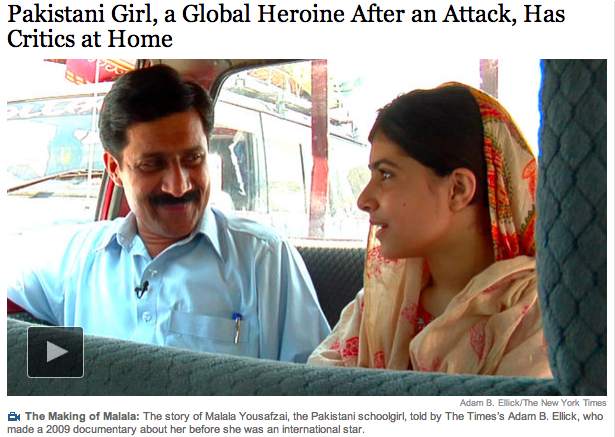 In the wake of all of the press this last week about Malala Yousafzai I thought this video would be interesting. The documentary relies on different documentary styles to tell the story of how Malala became who she is today. It uses the journalist as a first person narrator who balances a personal story with a journalistic perspective. He tells of his experience making the documentary and getting to know the family, but even as he reveals his close connections to the family he steps back and explores the complexities of Malala’s father. Her father is at once a champion of education for women, a businessman that profits off this education, and the husband of a woman who can’t read. He also may be using Malala for his own personal gain. Yet, as Malala develops her own beliefs and ability to voice them, whether or not her father influenced her falls away, as she makes a strong case for her own education as well as the education of all girls.
In the wake of all of the press this last week about Malala Yousafzai I thought this video would be interesting. The documentary relies on different documentary styles to tell the story of how Malala became who she is today. It uses the journalist as a first person narrator who balances a personal story with a journalistic perspective. He tells of his experience making the documentary and getting to know the family, but even as he reveals his close connections to the family he steps back and explores the complexities of Malala’s father. Her father is at once a champion of education for women, a businessman that profits off this education, and the husband of a woman who can’t read. He also may be using Malala for his own personal gain. Yet, as Malala develops her own beliefs and ability to voice them, whether or not her father influenced her falls away, as she makes a strong case for her own education as well as the education of all girls.
The video coupled with an article that explores the current situation in her town seems like a great example of transmedia. It continues the story. We are able to delve further into the challenging situation that began with Malala’s father’s interests and the shooting by the Taliban. Now there is a deeper understanding of what people mean in the article when they express resentment or appreciation for Malala and her father.